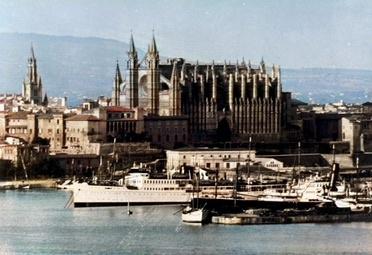How has the construction history of La Seu Cathedral influenced its architectural style and design?
Similar Topics
la seu cathedral
gothic architecture
catalan gothic style
palma de mallorca
antoni gaudí restoration
rose window
baroque renaissance influence
architectural evolution
The construction history of La Seu Cathedral in Palma de Mallorca has played a significant role in shaping its architectural style and design, making it a remarkable example of Gothic architecture with distinctive regional influences. The cathedral's construction began in 1229, shortly after the Christian conquest of Mallorca, and continued intermittently over several centuries, which allowed for a gradual evolution of its style. This extended building period led to a fusion of Gothic elements with later additions and renovations reflecting changing artistic tastes and structural technologies.
Initially designed as a Catalan Gothic structure, La Seu exhibits hallmark features of this style, such as its soaring vaults, pointed arches, and large stained-glass windows, including the impressive Rose Window dubbed the "Gothic Eye." However, the elongated timeline meant that Baroque and Renaissance influences also found their way into the cathedral, particularly in the interior decoration and some chapels, blending solemn Gothic austerity with moments of ornate embellishment. In the early 20th century, renowned architect Antoni Gaudí was invited to restore parts of La Seu, introducing subtle modernist touches while respecting its Gothic origins. His work included reorganizing the spatial layout and enhancing the natural light within the cathedral, which further diversified the stylistic expression of the building.
Overall, the construction history of La Seu Cathedral is a narrative of architectural adaptation and enhancement, making it not just a religious monument but a living record of artistic trends over centuries. The layering of styles and gradual modifications enrich the visitor’s experience, as the cathedral stands as a testament to both its historical and cultural context. Its design is not a static reflection of a single period but rather an evolving masterpiece that encapsulates the legacy of Mallorca’s religious and architectural heritage.
Initially designed as a Catalan Gothic structure, La Seu exhibits hallmark features of this style, such as its soaring vaults, pointed arches, and large stained-glass windows, including the impressive Rose Window dubbed the "Gothic Eye." However, the elongated timeline meant that Baroque and Renaissance influences also found their way into the cathedral, particularly in the interior decoration and some chapels, blending solemn Gothic austerity with moments of ornate embellishment. In the early 20th century, renowned architect Antoni Gaudí was invited to restore parts of La Seu, introducing subtle modernist touches while respecting its Gothic origins. His work included reorganizing the spatial layout and enhancing the natural light within the cathedral, which further diversified the stylistic expression of the building.
Overall, the construction history of La Seu Cathedral is a narrative of architectural adaptation and enhancement, making it not just a religious monument but a living record of artistic trends over centuries. The layering of styles and gradual modifications enrich the visitor’s experience, as the cathedral stands as a testament to both its historical and cultural context. Its design is not a static reflection of a single period but rather an evolving masterpiece that encapsulates the legacy of Mallorca’s religious and architectural heritage.


